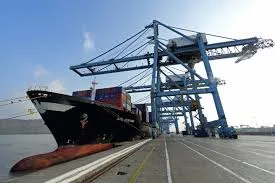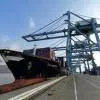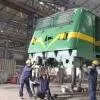Brand is an underleveraged asset in the world of construction, write
UPASANA DUA, Executive Strategy Director, and RONITA MUKERJEE, Executive Client Director, Landor, a brand specialist.
Up to 33 per cent of enterprise value is attributed to the ‘brand’. However, many brands overlook or fail to unlock the full potential of their brand to drive business growth. Traditionally, businesses have thought of the brand as merely a logo and advertisements. But this perspective is rapidly changing. Brands today act as strategic platforms for action that inform and influence every aspect of a business – from design, communication and customer experience to organisational culture. Let’s examine some themes we have observed and what businesses can learn from them.
Brand-led portfolio strategy
In an ideal world, there would be a personalised brand for every individual, catering to their unique needs and desires. However, when faced with limited resources, strategic decisions on the number of brands become crucial.
Evaluating the role of your brand, understanding what it represents for the end-consumer, and determining an acceptable brand stretch without diluting equity or alienating core audiences are essential steps in decision-making.
For instance, when SPRE, a company in the premium real-estate space wanted to enter the affordable homes market, it recognised that its luxury-focused master brand couldn’t stretch to cover this new segment. As a solution, we created a sub-brand with a new name -Joyville, endorsed by the master brand, to build trust and engage with a new target audience.
Another interesting example is a cement brand that has recently revamped its portfolio strategy. It started with six brands with nothing differentiating them aside from two price points. While the original intent was to be able to charge a premium with newer brands, it had failed to pull them apart over time, leading to a split sales force, excessive expenditures on marketing and no real return on investments. It was also struggling to attract independent homebuilders in a world where cement has become a significantly high involvement category.
We helped the company sunset five of its six brands. The new focus was now on one strong contender with variants based on a clear benefit and specification to cater to different audience needs. This exercise, painful as it was to transition to, now allows the company to put all its marketing and distribution might behind a single entity. One can imagine the long-term return on investment.
An important consideration in portfolio strategy is how you define your brand and the guardrails you set for it. When we worked on the brand creation of Neom - an SEZ in the Middle East, its focus was on a ‘boundless future inspired by imagination’. This vision enabled the company’s seamless expansion into sectors ranging from energy and manufacturing to art, culture, education and research.
Brand-led storytelling
Campaigns are temporary, often tactical and have a limited shelf life to communicate a specific offer. In contrast, a brand story acts as the north star for the brand, defining who you are, what you stand for, and what customers can expect from you. Done right, they have a longer lifespan and are directly linked to the brand’s equity and stature.
Brand stories help you stand out and represent something meaningful in a competitive environment.
When we developed the the Burj Dubai brand, the brief was clear. It was branding a pinnacle that was going to be the highlight of city life that would give the destination credibility, along with a heart and soul, and ultimately create a new downtown. Based on rigorous analysis of category, competition and stakeholder needs, it arrived at a brand narrative centred around ‘pre-eminence’, which elegantly captured the ambition of the developer - Emaar. The brand story informed design, portfolio strategy and communication. An effective brand story is both relevant and differentiated.
Brand-led customer experiences
Brand-led customer experiences go beyond the basics of having courteous staff.
To elevate the customer journey, consider mapping customer experience across stages of purchase. Identify pain points, and actively integrate technology and human interventions to significantly impact their perception of your brand by making the journey memorable.
For instance, DoubleTree Hotels - a global hotel chain, offers fresh warm cookies to guests during check-in; a signature ritual associated with the brand worldwide. It’s a thoughtful take on managing guest experience upon arrival.
When we designed the traveller experience for the international T3 terminal in Delhi, the central thought was ‘Expressive India’, which was based on the learning that airports are gateways to destinations, and destinations by themselves. Inspired by Indian motifs and cultural references, the consultant conceptualised sculptures and installations that went on to become popular spots for social media posts.
Physical or virtual experience centres are strategic investments that can help your brand connect strongly with stakeholders. For example, we helped design a physical and virtual omnichannel customer experience for Tata Communications, that allows top management from Fortune 500 companies to come and discuss solutions for their digital infrastructure problems. Each zone of the physical centre uses purposeful technology to allow for storytelling and exploration, while the virtual centre allows for overseas customers to receive exclusive invites to view the offerings.
Brand-led employee engagement
Your employees are your most influential brand ambassadors. They embody your company’s values and aspirations for the future.
Consider the friendly yet professional demeanour of a barista in your favourite coffee shop who takes your order – their approach sets the tone for your entire experience. Similarly, a flight attendant, dressed in traditional attire, who warmly greets passengers, creates an authentic sense of hospitality.
Symbols, rituals, and stories play a vital role in embedding brand values and behaviours within your organisation, ultimately influencing the overall customer experience. How employees perceive their workplace is ultimately what your customers will experience.
Brand performance
Return on investment (ROI) in the brand is a common question in the boardroom. And rightly so. Being data-backed allows for stronger conviction and decision-making for the organisation and allows for much easier selling to internal and external stakeholders. A good brand consultant can provide customised financial models that help clients make brand decisions grounded in data and certainty. It can help answer questions about future opportunities; whether it is brand portfolio optimisation, demand opportunity mapping or brand equity modelling.
In conclusion
To summarise, it is not uncommon to assume that the brand has no role or a limited role in the real-estate and construction category. Organisations also question the ROI. The good news is that there are predictive financial models that can help you make data-driven decisions with a clear understanding of the impact on business. Gone are the days where we assumed that a B2B brand didn’t need, well, a brand. In fact, successful B2B brands now operate quite like the B2C category. They think consumer first and they understand the need for recognition among the clutter and the value of building a strong brand for both internal and external audiences – one that stands the test of time.
Last, brand-led organisations also understand that the role of the brand is not limited to marketing teams. It is an organisational commitment to live the brand every day through every action and in every decision.




















